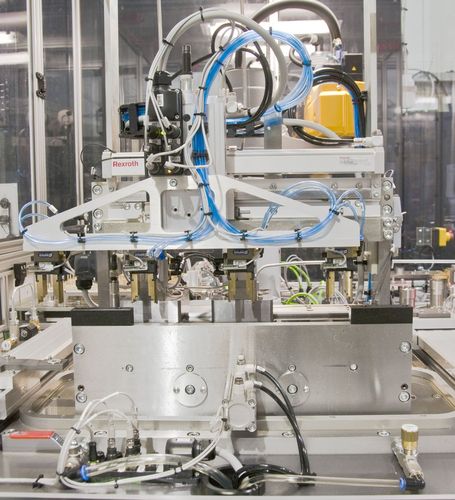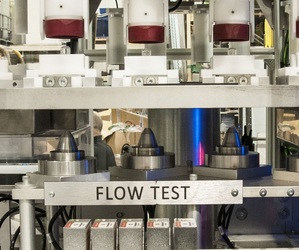Leak detection can take many forms and is used for a multitude of different reasons. CAT has solved many leak detection applications detecting and quantifying both internal and external leaks between sealing faces.
Various techniques can be used to measure leaks each with specific advantages for particular applications. Vision systems, flow rate measurement and pressure change are all techniques that CAT has employed to solve leak detection applications.
The exact method of leak detection and evaluation depends primarily on the component to be tested but other factors such as cycle time; leak rate and test medium also contribute to what technique is most suitable.
Leak Detection Specifications
| test pressure | up to 3000 bar |
| temperature range | ambient to 60°C depending on the type of test but could be significantly higher |
| flow range | measurable from 0.01 cc/min up to 20cc/sec and higher |
| cycle time | from 10 seconds |
| evaluation criteria | pressure change over time, timed pressure drop, measured flow, blob growth |
| measurement medium | air, hydraulic oil, calibration fluid, water |
Vision
With applications where it is difficult or impractical to form a seal around the leak interface, it may be possible to use a vision system for leak detection. This is generally only possible if the leak manifests itself on an external surface of the component. This method may also be used to determine the leakage rate if required. The system can be configured to be very sensitive to even very small leaks through careful selection of lighting and optics.
Flow rate
Where leak rates are more readily visible to commercially supplied equipment, it may be possible to measure it using an appropriate flow meter. One side of the leak interface is pressurised to the test pressure while on the other side is a collection chamber and path to the flow meter. When a leak occurs, the flow is measured by the flow meter and the leak quantified.
Pressure Change
Pressure Decay: One side of the mating face is pressurised and then isolated thus creating a chamber containing a fixed pressure. At the start of the test the pressure in the chamber is measured and recorded. After a set time the pressure in the chamber is sampled and the pressure drop calculated and converted to a leak rate. This value is then used to determine if the leak is within acceptable limits.
Pressure Rise: A seal is formed around both sides of the leak interface and one side pressurised. At the start of the test the pressure in the un-pressurised chamber is measured and recorded. After a set time the pressure in the chamber is sampled and the increase in pressure calculated. This value is used to determine if the leak is within acceptable limits.





